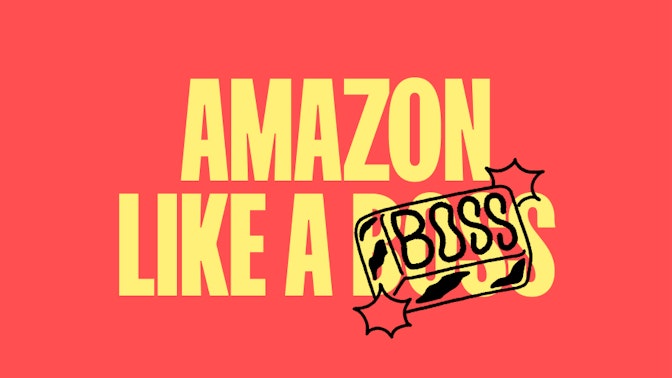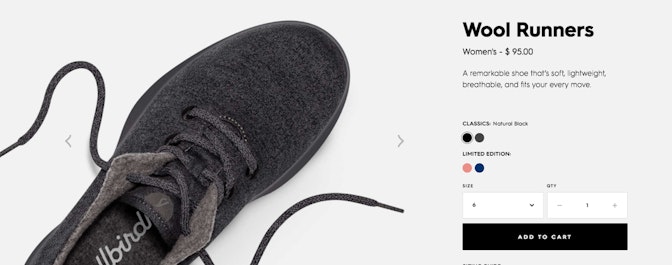Generating $4.2 trillion per year, it’s no surprise that ecommerce is one of the most rapidly growing segments of the global market. Millions of shoppers visit online stores to buy commercial goods, purchase household items, and otherwise keep up with trends—meaning that modern ecommerce businesses must be increasingly competitive to succeed.
One of the key pieces to this success is choosing the right business model. With many types of ecommerce businesses in existence, several options are available to you. Familiarizing yourself with their pros and cons is critical for shaping a successful and long-lasting venture.



Types of ecommerce
In the ecommerce world, there are three main ways a product can get sold over the internet:
Business to consumer (B2C)
An ecommerce brand that sells products directly to consumers is a B2C business. B2C refers to brands that curate their own products and sell items to individual people. Companies like Colourpop and Gymshark are classic examples of B2C.
Remember that some people use the term DTC (direct to consumer) interchangeably with B2C. While that’s not necessarily incorrect, DTC is best understood as a type of B2C rather than the equivalent of it.
→ Click Here to Launch Your Online Business with Shopify
Business to business (B2B)
B2B ecommerce comprises businesses that sell products or services to other businesses. For example, brands like SwagUp provide customizable products to corporate entities, while companies like Primera sell high-quality printers and accessories to other businesses.
While you may not hear about B2B as often as B2C, this ecommerce model is one of the most common in use today. In the US alone, there are 1.6 B2B companies for every one B2C company—solid evidence of B2B’s popularity.
Consumer to consumer (C2C)
Consumer to consumer (C2C) businesses are online marketplaces that empower consumers to sell their own products to other consumers. Platforms like eBay and Facebook Marketplace are common examples, although newer marketplaces like Vinted and Wallapop are beginning to see great traction in their countries of origin.
The C2C business model is also seeing worldwide growth. Some consumer-to-consumer platforms have seen a 50% spike in growth since 2020, with verticals like fashion, beauty, and family goods providing the most opportunity.

Types of B2C ecommerce business models
Within B2C, there are multiple business models to choose from. Consumers may not always know which type of business they are working with, but as a store owner, picking the right B2C model is crucial to your success.
Direct to consumer (DTC)
As mentioned previously, DTC is a type of B2C business model that focuses on selling products directly to individuals. Brands like Cupshe and Allbirds are some of the most successful examples of DTC brands.
- Pros: Since they control the production process, DTC companies typically have competitive prices, good quality control, and strong margins.
- Cons: Owning your manufacturing can be a huge ask, as you have to pay for your own production space and equipment.
Subscription DTC
Direct-to-consumer models that require buyers to pay weekly, monthly, or quarterly are referred to as subscription DTCs. This model is finding increased interest in the marketplace, with major brands like Tiege Hanley and BootayBag leading the charge.
Note a crucial difference: DTC can have subscription elements without being a true subscription model. True subscription DTC requires buyers to purchase subscription plans only.
- Pros: Recurring charges lead to very predictable income streams for businesses, as well as increased customer loyalty and stronger customer engagement.
- Cons: Not every product is a good fit for subscription models, especially large appliances and other non-consumables.
White and private label
White and private label businesses sell products that were created by a third party. White label items are non-exclusive products (think essential oils) that can be sold by any brand. In contrast, private label items are exclusively created for individual brands (think Target’s Archer Farms).
- Pros: Third-party manufacturing takes the stress of product protection off your plate and frees up your time to focus on critical tasks like marketing and customer experience.
- Cons: Since you have less control over white and private label manufacturers, you may not be able to monitor quality as much as you’d like. Additionally, the extra fees from third-party production could strip profits from your bottom line.
E-retail
Some ecommerce businesses source their product lines from other brands in order to create a store of heavily curated merchandise. This is known as e-retail, or the process of building the equivalent of a physical store. E-retail has given rise to many successful brands in the past few decades, such as goop and The Breakfast Pantry.
- Pros: E-retailers enjoy the capability to offer a wide selection of products without manufacturing every item.
- Cons: No product of your own can make it difficult to stand out in the marketplace—potentially reducing your brand awareness.
B2C wholesale
The B2C wholesale model is similar to an ecommerce version of Costco or Sam’s Club. The most identifiable brands, including Swish and Alibaba, have the characteristics of a B2B business while still offering bulk-buy options to individual consumers.
- Pros: Bulk buying allows businesses to take advantage of simpler picking and packing, which trickles down the pipeline to generate cost savings and greater efficiency.
- Cons: Since B2C wholesale customers are most interested in saving, your company may be at a major disadvantage if it doesn’t charge less than competitors.

Choosing the right ecommerce business model
Picking the right business model for your ecommerce company is a balancing act between your audiences, your resources, and your personal strengths. By asking a few simple questions, you can eliminate less efficient models and pursue opportunities that make more sense for your brand.
What does my audience want?
Your product’s audience should define a great deal of your brand, its values, and its most efficient structure.
Perform a focus group on the target market before beginning any business setup. Ask people about their needs, values, willingness to pay for your product, and how frequently they may want to repurchase. This should form the foundation of your ecommerce plan and direct your attention to the most plausible business model.
Remember: the better you know your audience, the more helpful this step will be. If you haven’t already created customer profiles, now is the best time.
What resources do I have?
There’s a big difference between what you have now and what you might have later. As you work on identifying the right ecommerce business model, it’s important to consider your current resources and how they affect your business today.
This is especially relevant in terms of capital. If you’re planning to make small amounts of food directly in your kitchen, a DTC model may work just fine. However, if you want to make lots of different foods with complicated instructions, this option may be too pricey.
Choose your ecommerce model based on what you have now. You can always change things up later.
What am I good at?
To know thyself (and thy business) is to succeed, especially when picking a business model.
As you compare and contrast the types available, consider how your strengths play into each. If you’re a seasoned business professional starting with significant capital, B2C wholesale might be a great fit. If you’re an expert marketer or a branding pro, a white/private label product may be all you need to differentiate yourself in the marketplace.
Study existing businesses to find a home
As you hone in on potential ecommerce business models, pay close attention to successful brands that share your niche. Ask yourself: what’s working for them? What isn’t? Could their current model be improved to give you a better competitive advantage?
While following the footsteps of other brands won’t make your business model unique, it will provide a great starting point for exploring successful approaches. Like scaling a rock wall, studying the status quo gives you a better idea of how to reach the top. Carefully examine your own strengths, audiences, and competitive outlook, focusing on new opportunities that could give you an edge over what’s already established.
Above all, remember that choosing an ecommerce model isn’t necessarily a one-and-done process. Keep an eye on how your business is performing, and don’t be afraid to change or tweak things to make them more efficient. By staying alert, you can make much more efficient decisions regarding your ecommerce business—both now and in the future.






